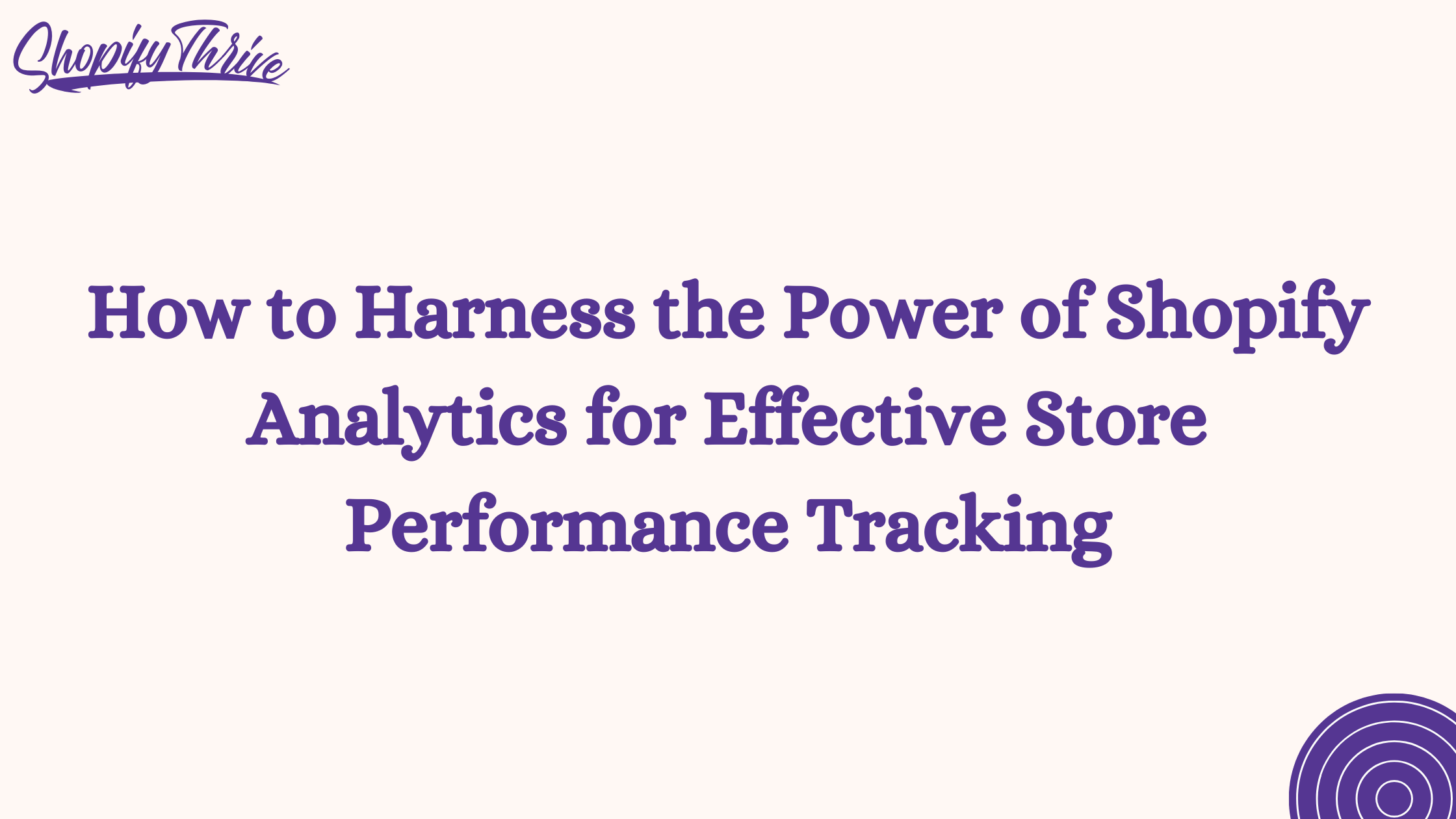
Noor
How to Harness the Power of Shopify Analytics for Effective Store Performance Tracking
- June 12, 2023
- , 5:19 pm
- , Shopify Tips
Introduction: Exploring the Power of Shopify Analytics
Shopify Analytics serves as an invaluable tool for gaining deep insights into your online store’s performance. With its array of features and capabilities, this guide aims to help you harness the full potential of Shopify Analytics. By effectively utilizing this tool, you can track and optimize your store’s performance with precision.
Analyzing Sales Data: Unveiling Key Performance Indicators
To monitor your store’s performance and identify areas for improvement, analyzing sales data is of paramount importance. Shopify Analytics offers a range of tools and reports to facilitate this analysis. Let’s explore some essential aspects:
- Sales Overview: Gain an instant snapshot of your store’s performance, including total sales, average order value, and conversion rates. This report enables you to track progress over time and detect any sales trends or fluctuations.
- Product Performance Analysis: Dive deeper into the performance of your individual products. Access detailed reports on product sales, best-sellers, and inventory levels. These insights empower you to make informed inventory decisions and optimize your product offerings.
- Channel Breakdown: Understand how your sales are distributed across different channels, such as your online store, social media platforms, or third-party marketplaces. By identifying which channels drive the most sales, you can allocate resources strategically.
- Customer Segmentation: Segment your customers based on their buying behavior, demographics, purchase history, and lifetime value. Analyzing customer data enables you to create targeted campaigns, nurture customer relationships, and deliver personalized experiences.
Unveiling Traffic Patterns: Insights for Effective Marketing Strategies
Monitoring website traffic is essential for understanding the effectiveness of your marketing initiatives and identifying growth opportunities. Shopify Analytics offers valuable insights into your traffic data, allowing you to optimize your marketing strategies. Explore the following aspects:
- Traffic Overview: Get a holistic view of the number of visitors, sessions, and page views your store receives. Monitor overall traffic trends and detect any changes in visitor behavior.
- Traffic Sources: Understand where your website traffic originates from—whether it’s organic search, social media, referrals, or paid campaigns. Shopify Analytics provides detailed reports on traffic sources, enabling you to allocate your marketing budget wisely.
- Referral Analysis: Identify external websites, influencers, or affiliates that are driving visitors to your store. Track referral URLs and measure their impact on your traffic and sales. This information guides your partnership and collaboration strategies.
- Landing Page Performance: Assess the performance of your landing pages, including bounce rates, time on page, and conversion rates. Analyzing visitor behavior on specific landing pages helps identify areas for improvement and enhances the user experience.
Tracking Customer Behavior: Driving Personalization and Retention
Understanding customer behavior is key to providing personalized experiences and optimizing marketing strategies. Shopify Analytics offers powerful tools to track and analyze customer behavior, helping you make data-driven decisions. Consider the following aspects:
- Abandoned Cart Analysis: Combat cart abandonment by analyzing data on abandoned carts. Identify the percentage of abandoned carts and reasons for abandonment. Implement strategies to reduce cart abandonment rates and recover lost sales.
- Customer Lifetime Value: Measure the lifetime value of your customers, including their average purchase frequency and total spend. Identifying valuable customers allows you to develop targeted retention strategies and foster loyalty.
- Customer Journey Analysis: Track customer interactions across multiple channels and touchpoints to gain insights into their journey. Understanding customer touchpoints helps optimize marketing campaigns and create seamless experiences.
- Segmentation and Personalization: Segment customers based on various attributes and behaviors. Leverage this data to deliver targeted campaigns and personalized experiences, enhancing engagement and driving conversions.
Conclusion: Optimizing Your Store’s Performance with Shopify Analytics
In summary, Shopify Analytics provides a wealth of information for effectively tracking and optimizing your store’s performance. By analyzing sales data, monitoring traffic patterns, and understanding customer behavior, you can make informed decisions that drive your e-commerce success. Regularly utilize the features and reports offered by Shopify Analytics to unlock the true potential of your online store.
Ready to transform and grow your shopify brand?
See why companies like Lash Artisan, Lust For Lashes, joemetry.co and more
launched their shopify Brand With ShopifyThrive.
